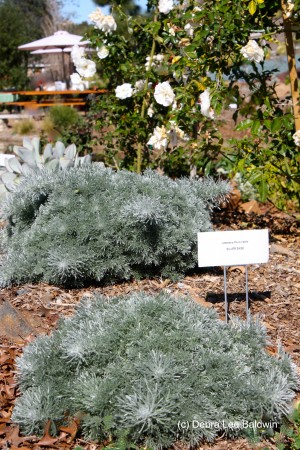
Waterwise Botanicals nursery in Escondido, CA has newly planted display gardens, and one includes silver-white plants.
Looking at the assortment made me wonder what legendary British designer Vita Sackville-West (1892-1962) would have thought. (She created a famous white garden at Sissinghurst that people come from all over the world to see.) Sackville-West doubtless would have wanted any plants shown here that were not available at the time. We take a lot for granted when it comes to our gardens, not the least of which are new cultivars and plants bred for performance.
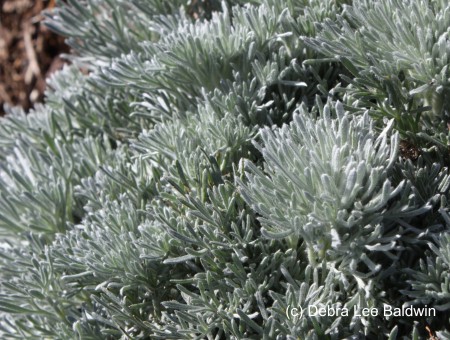
Artemisia ‘Powis Castle’ is a mounding, woody perennial with fine, feathery leaves. It’s hardy in all but the coldest zones and eventually grows to 3 feet tall and 6 feet wide. To keep it compact, remove flowers when the plant comes into bloom in late summer.
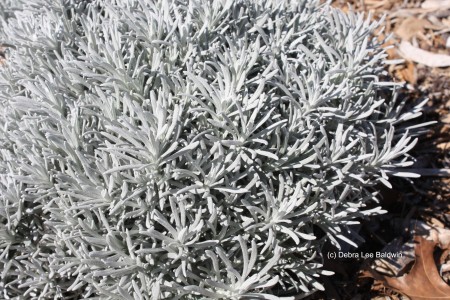
Curry plant (Helichrysum italicum) looks a lot like Artemisia ‘Powis Castle’ but isn’t as shimmery. Leaves have a marvelous scent reminiscent of curry powder. (It’s not a source of curry, which is a blend of Indian spices.) The plant produces clusters of yellow flowers from midsummer to fall. Zones 8b-11.
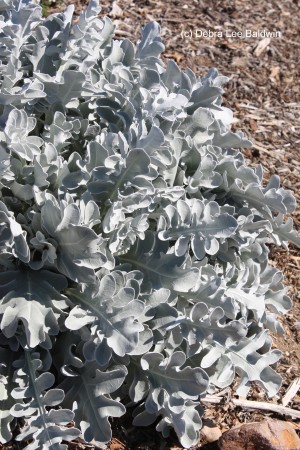
Like curry plant, Centaurea cineraria is a woody perennial in Zones 8b-11 and an annual elsewhere. There are several plants known as dusty miller; this one is not as common as the others but I think it’s hands-down the prettiest. The others have more finely cut leaves. Flowers usually are purple, but a white-flowering variety is available. Blooms in spring.
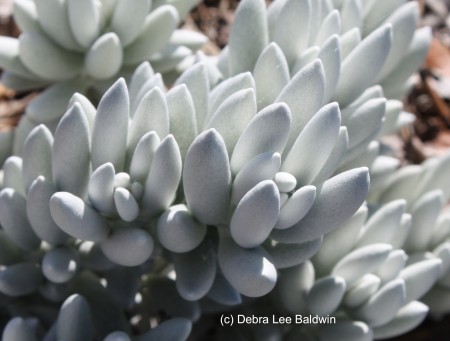
This succulent, Senecio haworthii, looks like it was photographed in black-and-white. It’s uncommon and I’m not finding much cultivation info on it, though I suspect it’s similar to Senecio serpens, which looks much the same except is sky blue and not fuzzy. Senecio serpens is hardy to the mid-20sF, and this one might go even lower because leaves are covered with fine fur. This will rub off with handling, exposing green leaves beneath the white—something to bear in mind if you want to keep the plant pristine. 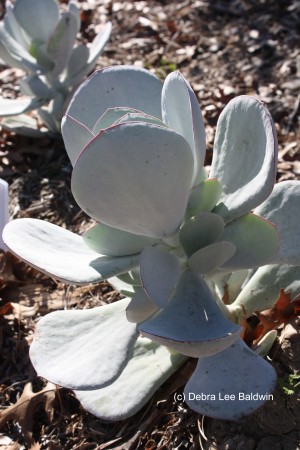
Leaves of Cotyledon orbiculata are about the size of the palm of your hand, and coated with a white powder that rubs off easily. Like all cotyledons, it produces gorgeous umbels of tubular red or coral flowers. Frost-tender.
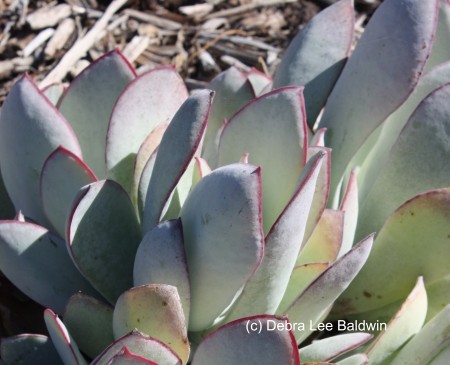
Cotyledons often are confused with crassulas (jade plants) because of their similar appearance. This grayish-white jade with leaves rimmed with red is Crassula arborescens. Like the cotyledon shown above, leaves have a white pulverulence. It blooms in midwinter and is frost-tender.
White is nice, but I don’t know about you, it’s like going on a diet. Right about now, I’m feeling starved for color. The next photo shows plants growing a few feet away from those shown above (those are the same picnic tables as in the first photo).
I’m eager for the entire display garden to fill in and to see all that silvery white juxtaposed with the bolder colors of dwarf red Euphorbia milii (crown of thorns) and golden jade.
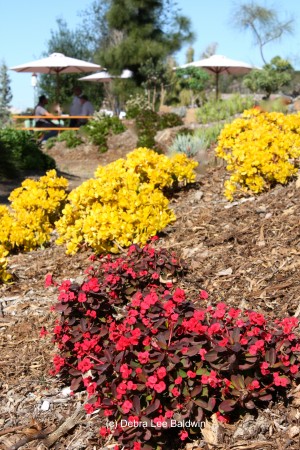
My goal is to share the beauty of waterwise, easy-care succulents in gardens, containers and landscapes via blog posts, newsletters, public speaking and workshops, photos, videos, merchandise, and social media (Facebook and Pinterest). My books: Designing with Succulents, Succulent Container Gardens, and Succulents Simplified. www.debraleebaldwin.com
